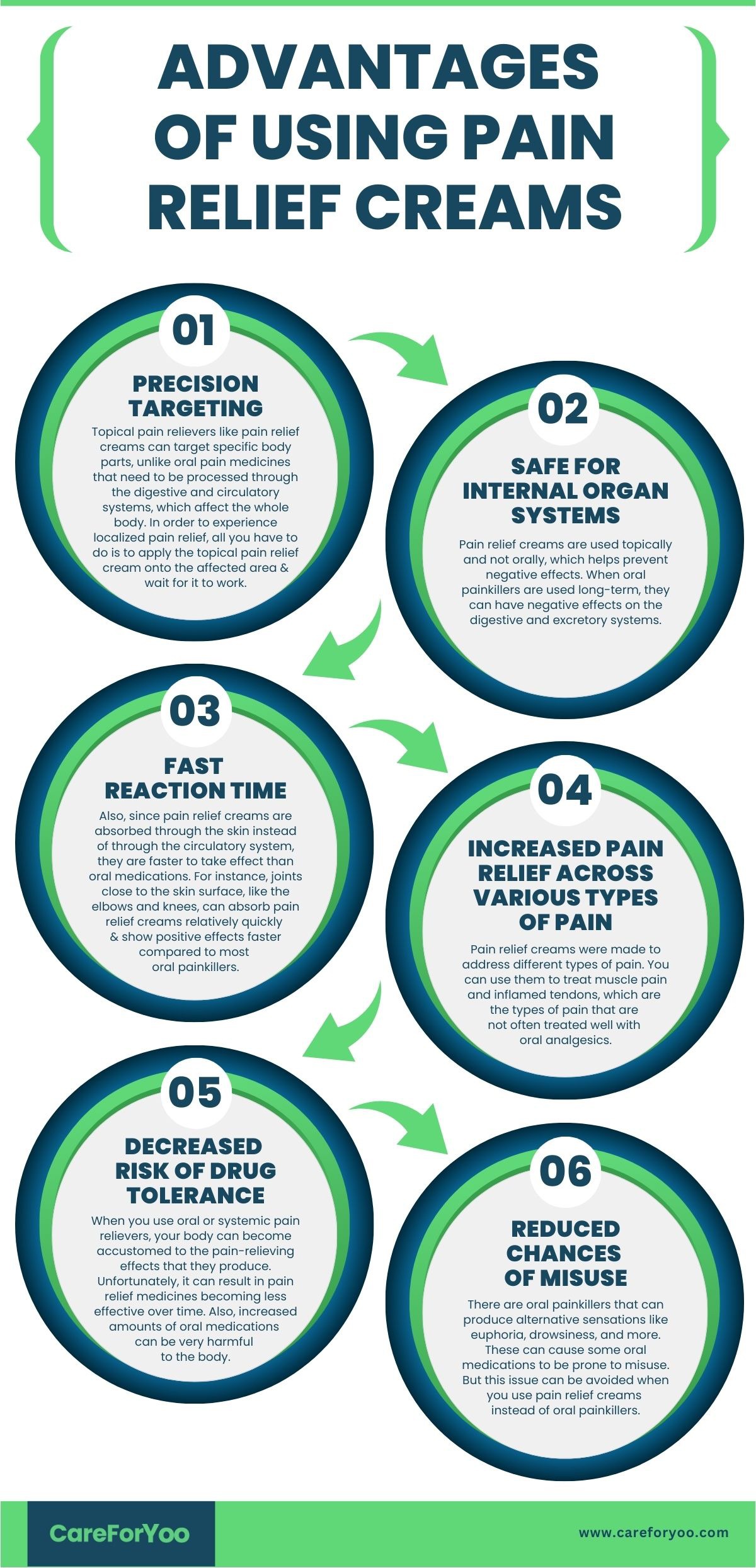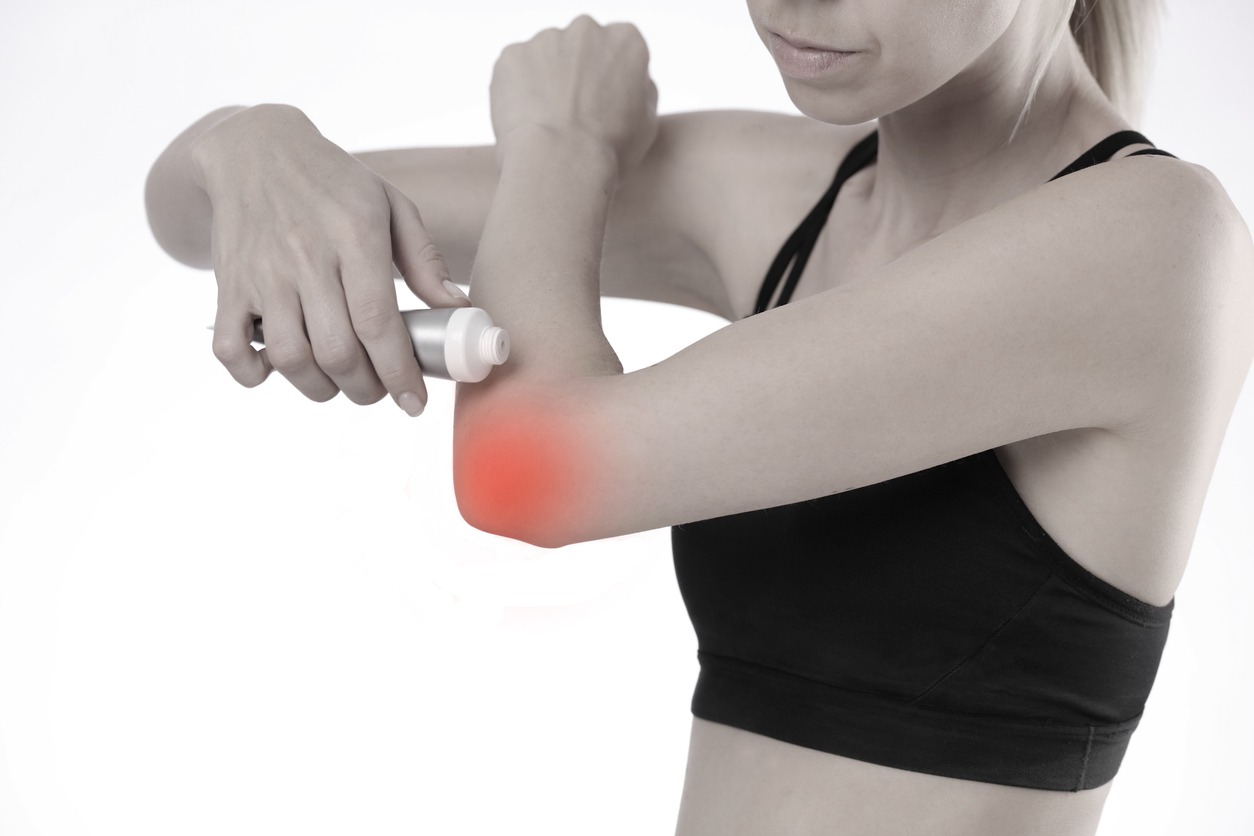Disclaimer: This article is for informational and educational purposes only and does not substitute professional medical advice. It is important to always consult a medical professional for any health issues.
Many people are suffering from muscle and joint pain due to different reasons. Some of them are athletes, while others are elderly people who have arthritis. There are also some that develop muscle and joint pain due to their line of work, while others are in pain due to injuries. When you are experiencing muscle and joint pain, there are different options that you can choose from to get relief. There are lots of medicines that you can take to ease the pain. However, not everyone is allowed to take pain relievers, especially those with other medical conditions or those who are allergic to certain medications.
If you are experiencing muscle and joint pain but can’t take oral medications, no worries, as there are other good options out there for you, and one of those is the use of pain relief creams. Whether you suffer from arthritis pain or you tweaked your knee while doing chores, or if you are an athlete looking to find relief from an injury, there is a pain relief cream that can help you. These are over-the-counter products that you can apply directly to your skin.
If you’d like to try using pain relief creams to ease the pain in your muscles and joints but can’t decide what to buy, we are here to help you. In this post, we are giving you a guide to selecting pain relief creams.
How Do Pain Relief Creams Work?
Pain relief creams are under the topical pain relievers category. They typically contain methyl salicylate, which gives them a minty scent and gives the skin a cooling sensation when applied. Methyl salicylate is also used as a counterirritant, which acts as a distraction to pain points. Pain relief creams may also incorporate a non-steroidal anti-inflammatory drug (NSAID), which is also present in medications like aspirin and ibuprofen. This depends on the product and other components it contains. When these are absorbed into the skin, they can decrease the inflammatory reaction. [1]
In addition to providing a cooling feeling, various painkilling lotions like menthol or mint camphor can deceive the mind into believing that the skin or body temperature is falling. The cooling effect desensitizes the nerve endings, just like ice or cold packs, which decreases arterial blood flow.
Pain relief creams are best used on acute musculoskeletal pain instead of chronic pain. Therefore, you might benefit from them if you have a sore neck or pulled muscle in your shoulder. These creams are also used to treat arthritis, minor aches and pains, sore muscles, sprains, and strains. [1]
Advantages of Using Pain Relief Creams
Pain relief creams can offer multiple benefits compared to common over-the-counter and prescription oral medications. If you are wondering what benefits you can get from using topical pain relief creams, below are the various advantages that they can provide:
Precision Targeting
Topical pain relievers like pain relief creams can target specific body parts, unlike oral pain medicines that need to be processed through the digestive and circulatory systems, which affect the whole body. In order to experience localized pain relief, all you have to do is to apply the topical pain relief cream onto the affected area and wait for it to work. [2]
Safe for Internal Organ Systems
Pain relief creams are used topically and not orally, which helps prevent negative effects. When oral painkillers are used long-term, they can have negative effects on the digestive and excretory systems. Topical pain relievers, on the other hand, do not need to pass through internal organs like the kidneys, stomach, digestive tract, and liver. This means that they do not cause gastric upset and cardiovascular risks, which are caused by oral medications. [2]
Fast Reaction Time
Also, since pain relief creams are absorbed through the skin instead of through the circulatory system, they are faster to take effect than oral medications. For instance, joints close to the skin surface, like the elbows and knees, can absorb pain relief creams relatively quickly and show positive effects faster compared to most oral painkillers. In addition to that, you can also use another dose of pain relief creams more quickly than you can take a second dose of most oral medicines. [2]
Increased Pain Relief Across Various Types of Pain
Pain relief creams were made to address different types of pain. You can use them to treat muscle pain and inflamed tendons, which are the types of pain that are not often treated well with oral analgesics. [2]
Decreased Risk of Drug Tolerance
When you use oral or systemic pain relievers, your body can become accustomed to the pain-relieving effects that they produce. Unfortunately, it can result in pain relief medicines becoming less effective over time. Also, increased amounts of oral medications can be very harmful to the body. But pain relief creams, on the other hand, can be an effective alternative to alleviate pain without any risk of drug tolerance. [2]
Reduced Chances of Misuse
There are oral painkillers that can produce alternative sensations like euphoria, drowsiness, and more. These can cause some oral medications to be prone to misuse. But this issue can be avoided when you use pain relief creams instead of oral painkillers. [2]
Things to Consider When Buying Pain Relief Creams
There are a few important things that you need to consider before you go out and buy or order a pain relief cream online. One of those is whether you are pregnant or breastfeeding or have a history of heart disease or allergic reactions to certain medications or ingredients that the creams contain. In addition, you also need to consider the type of pain you are experiencing, whether it is an acute sprain or arthritis. This will help determine which active ingredient will be most effective for your case. [3]
When buying pain relief creams, it is also important to read any instructions thoroughly and to make sure that you are using them correctly and with the right frequency. Another important thing that you need to consider is the cost of the product. It is essential to choose an effective pain relief cream that fits your budget, especially since most topical analgesics are applied several times a day.
The length of treatment using a topical pain relief cream may vary. However, if you are using it for a chronic condition like arthritis, you may need to use it for an extended period. Aside from that, consistency is also very important. Choose a pain relief cream that is absorbed easily and is not sticky or greasy. If you are going to buy online, reading user reviews may help provide some insight as to whether the product is non-greasy and effective. [3]
If you are not sure of what pain relief cream to buy or what is best for your case, you can also speak with your healthcare provider or pharmacist before buying. This way, you’ll be able to find the right option for your condition as well as your budget.
The Different Types of Pain Relief Creams
Over-the-counter pain relief creams fall into some general categories, such as counterirritants, anesthetics, salicylates, capsaicin, and newer CBD topicals. To learn more about these, below are the different types of pain relief creams that you can buy today:
Counterirritants
Pain relief creams that are under the counterirritants category work by creating temporary hot or cold sensations. These distract the brain and interrupt pain signals. Counterirritants mostly contain active ingredients, such as eucalyptus, menthol, camphor, and wintergreen. These are natural ingredients that are safe and may only cause minor side effects for some, like mild skin irritation. The only downside of counterirritants is that they can produce a strong odor. [4] Below are some examples of counterirritant pain relief creams to help you choose:
- Apeaz® Pain Relief Topical Cream: This pain relief cream is best used to alleviate simple backache, arthritis, bruises, sprains, and strains. It has a non-greasy and non-staining formula, making it easy to apply on affected areas, such as your back, neck, knee, foot, hand, and other areas. It contains active ingredients, such as menthol and camphor, to help with joints and muscle pains.
- Nature’s Willow Natural Pain Relief Cream: This pain relief cream is non-toxic and is made using natural ingredients. It contains botanical analgesics, such as white willow bark and helichrysum, combined with active ingredients like menthol, camphor, eucalyptus, and lavender for their counterirritant properties. This cream may help reduce pain and inflammation related to various types of muscle pains, joint pain, and more.
- Biofreeze Menthol Pain Relieving Cream: This pain relieving cream is non-greasy, and it contains natural moisturizers. It is fast-acting and has cooling menthol formula that delivers and penetrates the skin to relieve minor aches and pains in the muscles and joints. It is made with USP-grade menthol, and it is free of NSAIDs.
Salicylates
Salicylate-containing creams for pain relief give a modest amount of an anti-inflammatory drug that is structurally related to aspirin. There are also some products that are a combination of salicylates and counterirritants. The best thing about salicylates is that they can reduce acute pain temporarily and are odor-free. However, keep in mind that they can cause drug interactions with medications like blood thinners. Therefore, if you are sensitive to aspirin or taking a medication that may interact with aspirin, it is best to consult a doctor first before using the salicylate product. [4] Below are some examples of salicylate pain relief creams to help you choose:
- Ted’s Brain Science Pain Cream: This pain relief cream contains 10% methyl salicylate, which is a pain-fighting ingredient. It can be used on muscle strains and sore muscles for fast-acting relief. Make sure to apply it on unbroken skin two to three times a day for maximum effect.
- Bengay Ultra Strength Pain Relief Cream: This is a non-greasy topical pain relief cream that can ease backaches, minor arthritis, muscle and joint pain. It contains three active ingredients, which are camphor, menthol, ad methyl salicylate, for ultra-strong relief. It can penetrate deeply, and it comes in a convenient tube for portable and on-the-go relief.
- Aspercreme Pain Relief Cream: This is a fragrance-free and non-greasy pain relief cream that is clinically proven to relieve joint pain. It contains the active ingredient trolamine salicylate. You just need to rub it on the affected area, such as your knee or back.
Capsaicin
Pain relief creams that are under the capsaicin category create a burning sensation as this active ingredient is developed from chili peppers. According to specialists, substance P is a chemical that the body releases when capsaicin is present. It is involved in pain signals in the nervous system. When substance P is released, there is less of it available, making pain signals become less frequent.
Hips, shoulders, and the back are some of the deeper joints beneath the skin that can benefit from this kind of pain relief cream. Using it also has low side effect risks. However, it may take a few weeks of daily use before you experience results. Some people also claim that the burning sensation is too intense. Therefore, trying the product in a small area first is important. Capsaicin may also lose its effectiveness over time because of damage to the nerve tissues. [4] Below are the different examples of capsaicin pain relief creams to help you choose:
- Penetrex Warming Pain Relief Cream: This cream is formulated with capsaicin and other natural ingredients like camphor and arnica. It is non-greasy and cruelty-free, providing you with a gentle warming sensation to relieve joint and muscle pain. It can provide relief of aches and pains associated with sprains, strains, arthritis, and backaches.
- Zostrix Foot Pain Relief Cream: This is a maximum-strength pain relief cream that uses the natural power of chili peppers to provide relief from minor aches and pains. It is fast-acting, odor-free, and non-greasy. It can be used three to four times daily for around two to four weeks.
- Capzix Cream for Pain Relief: This is a high-potency pain relief cream that can provide warm pain relief for the toughest pain points. It is great for joint and muscle pains. It is odor-free and has a non-greasy formula.
Anesthetics
Anesthetics include a numbing and desensitizing agent called lidocaine. It mutes pain signals and is effective for arthritis and musculoskeletal pain. It is available in both over-the-counter and prescription strengths. However, keep in mind that anesthetic pain relief creams should not be overused as they can lead to serious side effects, such as irregular heartbeat. Therefore, when using this type of product, ensure that you follow the manufacturer’s instructions.
You should also remember that lidocaine should not be used with cold compresses or heat packs. It has a numbing action that diminishes your sense of hot and cold, which can result in damaged skin or accidental burns. [4] Below are some examples of anesthetic pain relief creams to help you choose:
- Aspercreme with Lidocaine Pain Relief Cream: This is a topical numbing cream that contains 4% lidocaine. It targets more pain receptors to numb away minor pains without any irritation or burning sensation. It penetrates muscles and joints to provide numbing relief for hours.
- Bengay Pain Relieving Lidocaine Cream: This lidocaine cream can provide pain relief, and it comes in a jasmine scent. It contains 4% lidocaine HCI as an active ingredient. It is great to be used for your back, neck, knee, hand, elbow, shoulder, and wrist. It can also be a great pain reliever for arthritis and joint pain. It is a soothing and non-greasy cream that does not leave any residue after application.
- Curist Lidocaine Cream: This cream contains 5% lidocaine for deep relief from skin pain. It is made with high-quality ingredients to provide you fast relief from pain, as well as itching, burning, and irritation.
CBD Topicals
Cannabidiol or also called CBD is the non-psychoactive component of marijuana. It is a relatively new addition to OTC pain relief products. There are creams that are infused with CBD, which is absorbed by the skin. Based on limited research, these creams may reduce inflammatory and neuropathic pain. [4]
The use of CBD creams can be great for those who want to avoid NSAIDs or those who do not like the numbing and heat sensations of other topical creams. Also, based on research, CBD may also reduce anxiety and improve sleep, which are two issues that are usually connected with chronic pain. However, the downside is that CBD products are often more expensive than other topical creams. [4]
Also, depending on where you live, there may still be a stigma associated with the use of these products, even though they contain only a negligible amount of THC and do not produce a “high.” [4]
Prescription Topicals
Aside from over-the-counter pain relief creams, there are also some topical pain medications that are available with a prescription. These include topical NSAIDs and prescription-strength lidocaine. [4] These are the products that your doctor might prescribe you in case over-the-counter pain relief creams do not work for you. Therefore, if you are experiencing consistent aches and pains even after using OTC pain relief creams, do not hesitate to consult your doctor for more effective treatments.
How to Use Pain Relief Creams Properly
When using pain relief creams, it is very important to use them as directed. Even though it is extremely rare, there have been instances where misuse or overuse of these products has led to serious side effects and even death, such as poisoning. Pain relief creams should never be mixed with heat because doing so may cause them to be absorbed into the bloodstream at a faster rate.
If you use a pain relief cream, make sure that you read the label carefully before applying it to your skin. Never apply them to open wounds and irritated skin to avoid further issues. Also, avoid applying pain relief creams near your eyes or genitals. If in case you develop a rash or allergic reaction, call your doctor immediately. If the burning sensation of the product is too uncomfortable or painful for you, use a towel to remove the product from your skin. In addition, experts recommend not to use topical pain relievers of any kind if you are pregnant. [1]
Many pain relief creams can’t be used for more than seven days. It’s because using it for longer than directed could lead to a rash or even a chemical burn. If your condition worsens or if the affected area becomes irritated, stop the use of the product immediately. If the pain won’t go away no matter what product you use, it is a sign to reach out to your doctor for better treatments. [1]
Conclusion
There are indeed a lot of options when it comes to over-the-counter pain relief creams. Overall, topical pain relief creams are great for those who experience intermittent pain in their muscles and joints, which is often caused by conditions like arthritis and bursitis. Choosing the best one depends mainly on your condition and preferences. But no matter which product you choose, ensure that you are always following the instructions that come with them to avoid any issues and further health concerns. We hope this post helped you learn more about selecting pain relief creams.
References
[1] Cleveland Clinic, E. (2022, October 10). Topical pain relief: What is it + how does it work? Cleveland Clinic. Retrieved December 14, 2022, from https://health.clevelandclinic.org/topical-pain-relief-what-is-it-and-how-does-it-work/
[2] Poteet, M. (2021, August 31). Benefits of topical relief pain gels over standard pain pills. The Compounding Pharmacy of America. Retrieved December 14, 2022, from https://compoundingrxusa.com/blog/what-are-the-benefits-of-topical-pain-relief-gels-over-standard-pain-pills/
[3] Harmon, M., & Lester, J. (Eds.). (2022, December 14). Best pain relief creams of 2022. Forbes. Retrieved December 14, 2022, from https://www.forbes.com/health/body/best-pain-relief-creams/
[4] de Falla, K. (2019, December 13). An essential guide to over-the-counter topical pain relievers. Arthritis. Retrieved December 14, 2022, from https://www.arthritis-health.com/blog/essential-guide-over-counter-topical-pain-relievers







